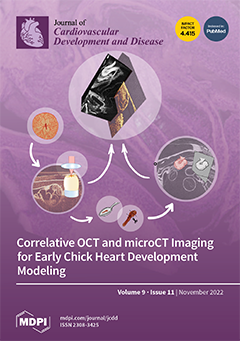Background: Progress has been made in genetic investigations on restenosis for the past 20 years, many studies regarding
AGTR1 rs5186 polymorphism and restenosis after percutaneous coronary intervention (PCI) have been published, but the result remains controversial. The study aimed to explore the relationship
[...] Read more.
Background: Progress has been made in genetic investigations on restenosis for the past 20 years, many studies regarding
AGTR1 rs5186 polymorphism and restenosis after percutaneous coronary intervention (PCI) have been published, but the result remains controversial. The study aimed to explore the relationship between rs5186 polymorphism and the risk of restenosis after PCI. Methods: We performed a systematic search on PubMed, Web of Science, Embase, CNKI, and Wan Fang databases up to December 2021. Two authors individually extracted all useful data of each study involved in this meta-analysis and assessed the study quality using the Newcastle-Ottawa scale. Odds ratios (ORs) and 95% confidence intervals (CIs) were combined in different genetic models for evaluation using a random-effects model or fixed-effect model. Results: There were eventually 8 studies of 1111 cases and 4097 controls eligible for this meta-analysis. Significant associations were found between rs5186 polymorphism and restenosis after PCI.allelic (OR: 1.31, 95% CI: 1.17–1.47,
p < 0.001), homozygous (OR: 1.90, 95% CI: 1.50–2.44,
p < 0.001), heterozygous (OR: 1.10, 95% CI: 0.93–1.29,
p = 0.27), recessive (OR: 1.80, 95% CI: 1.37–2.36,
p < 0.001), dominant genetic model (OR: 1.24, 95% CI: 1.06–1.44,
p = 0.006). Subgroup analyses indicated a significant association in Asians. Conclusions: The rs5186 polymorphism in the
AGTR1 gene increases the risk of restenosis after PCI in Asians significantly.
Full article






